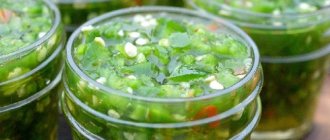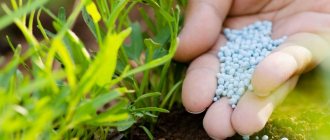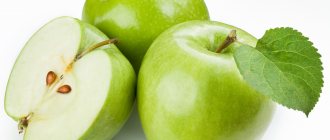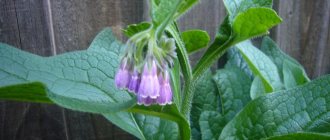In Russia, growing celery has been considered an extremely important activity since the beginning of the 18th century. Ancient healers used the beneficial properties of celery in the treatment of kidney diseases, inflammation of the prostate gland, and for healing wounds, and cooks used it in preparing delicious dishes. Celery was used as a seasoning and stored for future use: dried and salted.
And in our time, the roots and stems of celery are considered a storehouse of living vitamins (C, group B, E, PP - nicotinic acid, provitamin A, apiin glycoside), mineral trace elements (iron and zinc, phosphorus, sodium, potassium, magnesium and calcium), choline, asparagine, carotene, tyrosine, mucus and essential oils.
Root vegetables contain up to 10, and leaves - up to 30 mg/% of essential oils, so it is to them that celery owes its strong aroma and specific taste, stimulating the secretion of gastric juice.
The benefits and harms of celery are of interest to many lovers of this amazing vegetable.
There is a similar article on this topic - Ginger: beneficial properties and contraindications.
This article includes a variety of information on how, where, and to whom celery can be used. Each medicinal plant has benefits and harms, so when using it, you need to take into account the various properties of celery in accordance with the characteristics of the body and the presence of diseases in which a useful vegetable can harm health.
Medicinal properties of celery
Modern medicine uses the diuretic, enveloping and anti-inflammatory properties of the plant. Therefore, medicinal preparations are prepared from leaves, petioles, roots and seeds of celery.
Preparations from the plant are used with benefit if:
- pathologies of the heart and blood vessels, atherosclerosis and hypertension;
- infectious diseases;
- weak immunity;
- metabolic disorders;
- diseases of the nervous system and stress;
- diseases of the genitourinary and digestive systems, kidneys;
- hypovitaminosis in children and adults;
- obesity and cellulite;
- putrefactive processes in the gastrointestinal tract;
- poor digestibility of proteins.
You should not use plant preparations if you have:
- exacerbation of diseases in elderly and weakened people;
- exacerbation of ulcerative and cholelithiasis, kidney stones and gastrointestinal diseases, cholecystitis and pancreatitis,
- enterocolitis;
- thrombophlebitis and varicose veins;
- severe form of allergy;
- high blood pressure to exclude a crisis;
- pregnancy and lactation, since breastfeeding may reduce milk production. It becomes of a specific taste, which is unlikely to please the baby.
What does celery look like? Photo:
Photo of petiole celery
Photo of celery root
photo of celery stalk
photo of celery root
Egor
Root celery of this variety is considered a mid-season plant. The vegetative period lasts about 175 days. The leaves are collected in a raised rosette.
Vegetables have a round shape and a powerful appearance. The smooth surface of the root crop has a grayish-white color. The weight of the vegetable is 250–450 g, and inside the root vegetable has a soft white core with a pleasant smell.
Egor has increased productivity, it contains a high content of substances beneficial to human health. From 1 sq. m. harvest 3 kg of crop.
Albin
A popular root variety bred by breeders from the Czech Republic. The average duration of root growth is 160 days after germination of the first shoots.
The diameter of the root crop reaches up to 15 cm. Inside the fruit there is fragrant white pulp, which retains its properties even after processing.
Long leaves, reaching up to 18 cm in height, are used in preparing a variety of dishes.
In the lower part of the root system, the presence of rare lateral roots is noted.
Vegetables are harvested in September-October. There are no restrictions on landing Albin by region.
Attention! It is recommended to store celery root for 3 to 6 months.
The president
The President variety was developed by Dutch specialists. The ripening of its root crops is observed in the middle period. The weight of the vegetable can reach 500 g.
The fruit has a spicy taste.
The yield of this species is 3.3 kg per 1 sq. m. landing.
The plant is unpretentious and adapts to any conditions. The culture grows well in sunny areas with fertile soil. Experts note that this variety grows well throughout Russia.
Celery juice - benefits and harms
Doctors consider juice from fresh petioles and leaves to be more effective than infusions or decoctions of celery .
It will eliminate bloating in the stomach and relieve cramping pain. For gastritis, ulcers, chronic colitis, use the juice, as well as the green part and roots.
A salad of roots and leaves, juice in pure form or with carrot juice is used to treat congestion of the lungs and bronchi, colds and bronchial asthma. The juice will help calm nerves, for men - to get rid of impotence, for women - to find a thin waist, regulate the menstrual cycle and reduce pain.
However, if you have heavy menstruation and uterine bleeding, do not drink the juice of the plant - it will be harmful.
Celery juice, tea made from dry herbs and seeds will eliminate constipation in older people and improve water-salt metabolism. In order not to cause harm, in case of exacerbation of chronic diseases in old age, you can drink it only after treatment.
Using juice to treat diseases (recipes):
- mix the juices of celery and green beans - 50 ml, carrots - 100 ml, Brussels sprouts - 150 ml and drink for diabetes, gout, obesity, allergic dermatitis, urticaria, and other skin diseases;
- for prostatitis, drink juice 1 tbsp. l. before meals, make enemas from it and rub it into the groin area mixed with onions;
- for articular rheumatism, drink a mixture of celery and carrot juice (1:2), at a daily rate of 300 ml of celery juice and 600 ml of carrot juice;
- for abscesses, wounds and ulcers, apply a compress of juice or crushed leaves with sour cream to the painful area to improve resorption.
About the benefits of celery juice, video:
Selecting a location
Planting plans begin in the fall, immediately after harvesting, since root celery can only be grown correctly in a properly selected and prepared area.
The best predecessors of culture are:
- all types of cabbage;
- melons;
- beets, cucumbers, tomatoes;
- lettuce, spinach;
- legumes
Related article:
Growing tarragon
To grow root celery, you need loose, moisture- and breathable soil with neutral or minimal acidity.
The site is dug up for the first time in the fall with the simultaneous addition of organic matter - compost, humus, rotted manure. In the spring, half a month before sowing or planting seedlings, another loosening is carried out, after which holes or furrows 8–10 cm deep are prepared, placing them at intervals of 50 cm in all directions. Then water it with warm water and cover it with light-proof material.
Celery root - beneficial properties and contraindications
Even in the time of Giacomo Casanova, they knew the benefits of celery root for men. It was considered a love potion and a means to strengthen potency and long-lasting erection. It is now known that it contains, like the stems and leaves, androsterone (sex hormone) in large quantities. Therefore, to demonstrate indestructible strength in sexual exploits, a man needs to use celery of any preparation, especially the root. For an elderly man, it will help get rid of pressure surges and rejuvenate the body with antioxidants.
Root celery is especially necessary in the diet of male and female populations; its beneficial properties are complemented by salt, so salads made from it do not need to be salted , which is important when following diets. Since celery roots and grass are rich in salt, it is derived from them as a source of organic sodium to enhance nutrient absorption.
For people with ulcers and people with obvious gastrointestinal problems, especially if there is gastritis, celery root is contraindicated.
Using the root to treat diseases (recipes):
- for allergies, drink half a teaspoon of juice half an hour before meals or infusion: the root (2 tbsp.) is crushed and infused in cold water (1 tbsp.) for 2 hours and separated from the grounds, drink 1/3 tbsp. before meals;
- for dermatitis , use freshly grated gruel of the root to provide an anti-inflammatory effect;
- for gout, polyarthritis and rheumatism, apply grated root, crushed leaves or a decoction in the form of a compress.
Why is it useful?
Celery helps not only to diversify the daily menu, but also to improve the health of the body. The therapeutic effect is ensured due to the beneficial properties of the vegetable:
- Strengthening vascular walls, increasing their elasticity and mobility, which ensures stabilization of blood pressure.
- Improving and facilitating the functioning of the pancreas.
- Supporting factor in cardiovascular diseases.
- Removing cholesterol from the body (entered with food and previously accumulated in the blood).
- Removing excess fluid, which helps eliminate swelling.
- Prevention of rheumatism, gout, arthritis, kidney pathologies.
- Restoration of tissues affected by a malignant tumor (positive dynamics are observed with regular consumption of the vegetable in its raw form).
- Cleansing the intestines of toxins, waste and other harmful substances.
Celery has negative calorie content, so it is included in the diet when losing weight. Any part of the vegetable improves metabolic functions. This is important not only for those who are struggling with extra pounds, but also for women over 50.
With minimal physical activity (daily morning exercise or jogging is enough), metabolism is activated, the process of burning fat is improved, and the body is cleansed of toxins and excess water.
In addition, celery restores hormonal levels. During the period of premenopause and menopause, this is important, as it is possible to alleviate unpleasant symptoms.
During pregnancy and breastfeeding, experts do not recommend consuming celery. Abuse it anyway. This caution is due to the following factors:
- influence on blood circulation in the pelvic organs, which can cause bleeding;
- increased formation of gases in the gastrointestinal tract;
- allergic reaction in infants.
During pregnancy, in the absence of contraindications, celery can be consumed no more than 1-2 times a week in small portions. In the first trimester and from the seventh month, it is better to avoid using the product.
Before introducing celery root into your diet, contraindications should be excluded. Doctors do not recommend consuming vegetables if you have pathologies:
- epilepsy (increased seizures are noted);
- kidney stones (celery provokes the movement of solid particles in the genitourinary system);
- exacerbation of gastrointestinal diseases (coarse fiber has an irritating effect on focal areas).
Warnings apply only to cases of regular consumption of the product. If you use celery from time to time, you can avoid harm to your health.
Traditional medicine recipes
The green part, the seeds, have anti-inflammatory and diuretic effects, so they are used for swelling. The drugs treat kidney and urinary tract diseases and urolithiasis. The greens are boiled, infused and the juice is squeezed out of it. Decoctions and infusions are well tolerated by patients, since they have a diuretic effect with low toxicity.
- For a diuretic decoction you will need seeds (2 tbsp.) and boiling water (1 tbsp.). Boil over low heat for 30 minutes and drink 2-3 tbsp before meals. l.
- Infusion for cystitis : fresh and chopped roots (1 tbsp) are placed in a pan with cold boiled water (1.5 tbsp) and covered with a lid, kept for 4 hours and separated from the grounds. Drink 1 tbsp 30 minutes before meals. l.
- For skin diseases , boil the seeds (1 tsp) in a glass of water (1 minute), leave for half an hour, filter and drink 1 tbsp before meals. l.
- For painful wounds and ulcers, make pain-relieving lotions: crushed leaves (1/2 tbsp.), pour vinegar (1/2 tbsp.), add sea salt (1/2 tsp.). Moisten a napkin with the mixture and apply it to the sore spot.
- For purulent and long-healing wounds : grind a fresh celery leaf with butter (unsalted) and apply as a compress.
- For articular rheumatism : make a collection of oregano and celery leaves (1 tsp each), coltsfoot and raspberries (2 tsp each). Boil 2 tbsp. l. in 2 tbsp. boiling water for 5 minutes and separated from the grounds. Drink a hot decoction of ½ tbsp. 3–4 times/day.
- for thrombophlebitis : the leaves are ground and mixed with vegetable or butter until it becomes sour cream.
Agricultural technology of culture
Root celery is grown through seedlings from seeds , followed by picking and transferring to open ground . Care involves sufficient watering, loosening, fertilizing and trimming the side roots.
Preparing seeds and soil
The timing of sowing celery seedlings depends on the growing region : in the northern regions - at the end of January - early February, in the central regions - all of February, in the southern regions - the second ten days of February - the first ten days of March.
Before sowing, the seeds are stratified : kept in warm water for a day, wrapped in a damp cloth and left for 6-7 days at room temperature. Next, the fabric with the seeds is placed in the refrigerator for 14-15 days.
In addition to stratification, they use:
- soaking in warm water for a week;
- germination in damp gauze on a saucer with water (7-10 days);
- soaking in hot water;
- germination in wet sawdust.
The easiest way to prepare celery seeds for sowing is to treat them with growth stimulants “Epin” or “Zircon”.
Seeds purchased from trusted manufacturers do not need disinfection. Those collected by hand are pickled in a solution of potassium permanganate or Fitosporin .
Sowing and caring for seedlings
A layer of straw 2 cm thick is placed at the bottom of the seedling boxes to maintain the optimal temperature of the root system and absorb excess water.
The soil mixture is prepared from peat, turf, humus, and coarse river sand (3:1:1:1). Add 400 g of ash and 1 tsp to a 10 kg bucket. urea.
The germinated seeds are slightly dried, mixed with sand and sown in boxes with moist soil. Sow in rows to a depth of 1 cm with an interval of 5 cm.
The container is placed in a dark, warm place and covered with glass or plastic film. The prepared seed material sprouts in 12-15 days at an air temperature of +22...+25°C.
After the sprouts appear, the film or glass is removed and the box is placed on a lighted windowsill. The optimal air temperature is no higher than +16°C.
To prevent fungal diseases, add “Fitosporin” or “Trichodermin” to the water when watering. Watering frequency - 2-3 times a week.
Dense seedlings are thinned out to prevent the seedlings from weakening and stretching into growth. The procedure is repeated as necessary.
The substrate is periodically loosened with a wooden peg for additional aeration of the root system.
The first month, root celery grows slowly . Approximately 25 days after sowing, the first true leaves appear. At this stage, the seedlings are transplanted into individual 300 ml containers. The thickness of the soil mixture is at least 10 cm.
When transferring, seedlings are immersed in soil up to the cotyledon leaves , without covering the central growth point. The root system is carefully covered with earth. Picking ensures the growth of additional lateral roots; seedlings take root better and develop in spacious containers.
When picking root celery seedlings, you should not pinch the main root , otherwise a brush of unsightly-looking roots with a small root crop will form.
Next, the seedlings are watered and shaded with paper for 3 days . Pale leaves indicate a lack of minerals, so urea is used for feeding (1 tsp per 10 liters of water).
Celery seedlings grow best at air temperatures of +15...+16°C during the day and +11...+12°C at night.
Important! If the air temperature at night stays at +10°C for a long time, after transplanting into the garden, the plants throw out flower stalks. The quality and quantity of the harvest decreases sharply.
Further care for seedlings involves loosening the soil, watering 2-3 times every 7 days, airing and periodically fertilizing with mineral compounds: 1 tsp. “Nitrofoski” for 1 liter of warm water. It is even better to use complex fertilizers “Kemira-Lux” and “Solution”. Each time after feeding, the leaves are sprayed with a spray bottle to wash away any remaining nutrients and prevent burns.
1-2 weeks before planting seedlings in the garden, the containers are taken out into the open air . First they leave it only during the day, and then at night. This must be done to harden the plants and ensure better survival in the new location. 3 hours before transplanting, seedlings are watered abundantly.
Planting in open ground
Celery is planted in open ground at the age of 50-60 days, after the appearance of 4-5 true leaves . You should not expect large root crops from weak and overexposed seedlings.
The optimal time for transferring celery root seedlings is the second ten days of May. In the southern regions it is planted 1-2 weeks earlier.
Celery of early varieties gives a higher yield compared to celery of late varieties.
Root celery is grown in light sandy loam soil rich in humus . The site is chosen on the south side of the garden.
In autumn, the soil is dug up and fed with humus (10 liters per 1 m²). In the spring, deep plowing is carried out and the soil is watered with a strong solution of potassium permanganate or copper sulfate. Holes with a depth of 10 cm are formed on the site. The planting pattern is 20x20 cm. The row spacing is 50 cm.
It can be useful:
Growing leaf celery in open ground
Instructions for planting petiole celery for seedlings
Planting and caring for petiole celery in open ground
Care
Rules of care:
- The soil is kept constantly moist, without overwatering and avoiding excessive dryness. The frequency of watering depends on the weather.
- The area is mulched with sawdust, straw or rotted hay to prevent weed growth and retain moisture.
- Loosening is carried out after each watering, weeding - as the weeds grow.
- As soon as the root crop increases in size, the soil is raked away, freeing the root part and stripping the lateral roots. This contributes to the formation of round and large root crops.
- The culture is fed with an infusion of chicken manure (1:15) 2 weeks after planting in the ground, “Nitrophoska” or “Superphosphate” (25 g per 10 liters of water) - at the end of July.
- The tops of root celery are not cut off until harvest, otherwise the root crop will not receive proper nutrition and will ripen small.
Diseases and pests
Root celery is resistant to most fungal and viral diseases : viral mosaic, white rot, blackleg. To prevent infection, it is enough to regularly weed the beds, maintain an optimal level of soil moisture, observe crop rotation, and timely feed with minerals.
Chemicals are not used to kill slugs and carrot flies , since roots and foliage absorb toxic substances like a sponge. Biological preparations are used to treat plantings: “Bitoxibacillin”, “Gaupsin”, “Boverin”, “Fitoverm”, “Lepidocid”, “Verticillin”.
Slugs are collected manually or the plantings are sprayed with a solution of ammonia (2 tablespoons per 10 liters). All procedures are carried out at night, when pests are active.
Used to repel carrot flies:
- ammonia (2 tbsp per 10 l);
- saline solution (1 tbsp per 10 l);
- onion peels (400 g per 5 l);
- orange zest (5 kg per 5 l);
- tobacco dust, ground red pepper, mustard powder (for dusting plants).
Harvest and storage
Yellow and limp foliage indicates complete ripeness of root crops . The day before digging, water the soil generously for easy extraction of celery. Root crops are pulled out of loose and soft soil by the tops.
It is difficult to remove celery from clogged soil, so gardeners use a shovel or pitchfork. The root vegetables are carefully lifted and pulled out, the greens are cut off , the soil is cleaned off, and the vegetables are left to dry in the garden.
Damaged ones are eaten first ; they are not suitable for storage, as they quickly deteriorate.
Root vegetables are stored in a cool place at a temperature of +2...+8°C .
Benefits of celery for women
Although celery does not taste like candy, it is low in calories. 100 grams of it contain only 8 calories. It also contains a lot of water, so it can be included in the diet for the complex treatment of obesity or cellulite, as well as to improve visual acuity.
For weight loss and in hot weather, it is useful to drink on an empty stomach a cocktail of juices of apples (150 ml), carrots (10 ml) and celery (50 ml). It is good to use celery root for weight loss by squeezing juice (1 tbsp) from it and mixing with honey (1 tbsp).
If you eat this mixture to suppress your appetite before meals, then the celery diet for 7 days will seem lax (due to the lack of hunger).
Preparing juice from celery and cucumbers, video:
A diet based on celery soup will allow you to lose 5–7 kg of excess weight. If this is followed, soups should be prepared for 7 days.
Celery soup - a recipe for weight loss
Cut into strips celery root (200 g), carrots (6 pieces, 100 g each), red and green sweet peppers (1 piece each - 400 g in total), green beans, tomatoes (6 pieces) and herbs. Shred cabbage (small) and onion (6 pcs.). Place everything in a saucepan and add tomato juice (1.5 l), bring to a boil and simmer uncovered and covered for 10 minutes on low heat.
For the second option, you will need 3 liters of water, bunches of green celery (2-3 stalks) and onions (6 pcs.), cabbage (small) and tomatoes (2 pcs.), sweet bell peppers (2 pcs.) and spices. Cook for 15 minutes.
Celery diet 7 days – menu
- Soup, fruits of all types and varieties, excluding bananas. Liquids: tea and coffee without sugar and milk, still water, fruit drink or cranberry juice for daily use.
- Any version of the soup is alternated with green vegetables (fresh, leafy or canned), excluding green peas, corn and other legumes. For lunch or dinner, add baked potatoes with 1 tsp to vegetables. vegetable oil.
- Any version of the soup is alternated with vegetables, excluding potatoes.
- Any version of the soup is alternated with vegetables, fruits, bananas and lean milk (1 tbsp.).
- One of the soup options is supplemented with beef (300–400 g), divided into 2–3 portions, and tomatoes (fresh or canned).
- The second version of the soup is supplemented with beef and vegetables, including leafy ones.
- The first version of the soup is complemented with natural rice, vegetables and fruit juice.
You should not eat sugar, bread, any fried foods, drink alcohol or drink sweet carbonated drinks with your food.
For a 7-day diet, you can prepare celery soup for weight loss according to your own recipe. Feedback from nutritionists is more positive; they welcome the low calorie content of dishes, especially for obesity and cellulite. There are no fats or excess calories, and few carbohydrates, so the overall diet also reduces its calorie content.
Since celery seeds contain a lot of beneficial oil, it is widely used by perfumers and pharmacists. face mask at home . To do this, seeds (1 tsp) are pounded in a mortar. Mix with honey (1/2 tsp), raw yolk (0.5–1), blue clay (0.5 tsp).
This mask is applied to the skin of the face and head, massaged well into the hair roots and distributed through the hair with a comb. For dry hair, you can add a little vegetable oil to the mask (1 tsp).
Mid-season
The root crop ripens in 170 days. Suitable for both food use and long-term storage in winter. This type has an original taste. When deciding which variety is better, you can be guided by reviews of other summer residents. All varieties presented below have an exquisite taste and aroma. The following can be classified as mid-season:
- Giant.
- Egor.
- Strongman.
- Albin.
- The president.
Strongman
This species is mid-season. The harvest can be obtained on the 140th day after the first shoots hatch. The plant has strong, dark green leaves. The root vegetable has a yellow tint and weighs from 90 to 120 g, and their diameter is up to 12 cm. Inside the vegetable there is a juicy white core.
From 1 sq. m of planting, you can get 2–3 kg of root crops. The resulting harvest is harvested as the fruits ripen.
For cooking, you can use both freshly harvested and dried roots of this healthy vegetable. You can grow Silach celery in almost all climatic zones of Russia.
How to cook celery root?
The spicy taste of the plant will give dishes a pleasant aroma and zest. Not everyone knows how to cook celery. There is no limit to the flight of fancy in accordance with taste preferences.
The root is stewed with vegetables, baked, cutlets are prepared, combined with pineapple, fresh and sour apples, original mixtures are made for salads, and exotic and traditional dishes are prepared.
Leaf celery strengthens the heart muscle, restores restful and long sleep, relieves gout and rheumatism, as it removes uric acid. It is useful for older people to use it if they have poor digestion, since apiin and limonene have a beneficial effect on peristalsis.
Celery root dishes - recipes
Fried celery.
If you have a piece of boiled meat or poultry, fresh or soaked vegetables, then fried celery in vegetable oil is suitable as a side dish. Beautifully cut into thin pieces and fried in olive or corn oil. It cooks faster than potatoes, so you need to be careful not to overcook it. Place on a platter on lettuce leaves.
Gherkins with celery.
For salad, cut cold boiled or smoked chicken fillet into thin strips (300 g). Then small gherkins (4-5) and celery root (separately) are cut into strips. It can be boiled ahead of time and cooled, or in pieces (1 minute) and cooled with ice water to retain the crunchy flavor.
Add a straw of chili pepper (piece) and sweet Bulgarian (red and green - 2 pcs.). Season with mayonnaise. Place dried crispy bread croutons (2 pieces) or crackers nearby. Sprinkle with herbs on top.
Assorted celery root salad.
Grate a medium celery root onto a coarse grater (or a special one, like for Korean carrots). Then one small beetroot (raw), 2 carrots, apples (simirenka or other sweet and sour variety - 2 pcs.). Finely shred Korean cabbage, cut lettuce and spinach into strips (2 pieces each), chop parsley, celery, and dill. Mix everything and add the juice of 1 lemon instead of vegetable oil (or the juice of 0.5 lemon and 1 tsp of oil). Sprinkle with herbs on top.
Celery and apple salad
For a simplified version of the salad, you will need grated celery root, small cubes of apples, chopped walnuts (to taste), juice of 1/2 lemon, sea salt (to taste), mayonnaise. Mix everything, add lemon juice and season with a spoon of mayonnaise.
You will be interested in this article - Ginger: beneficial properties and contraindications.
Celery puree recipe
Chop celery root (400 g) and pour boiling water over it, cook for no more than 15 minutes, beat in a blender with the addition of cream (50 g) and raw egg (1 piece, if desired) and sea salt to taste.
Fried celery with hollandaise sauce
Chop the root 1.5 cm long into strips and place in cold water for 30 minutes. Then you should drain and blot with a towel, fry until golden brown in sunflower oil, add salt to taste. Serve with hollandaise sauce.
Sauce: soften butter (2–3 tbsp.) and grind with yolks (2–3 pcs.). Add flour (1–2 tsp) to a warm vegetable broth or broth (0.5 tbsp), stir well and pour in a thin stream into the boiling broth (1 tbsp). When thickening, add yolks with butter, cream (0.5 tbsp.), salt and bring to a boil. If desired, add finely chopped herbs to the sauce.
What is good about celery root?
Celery root has a rich chemical composition and low calorie content, which allows it to be included in the diet menu.
Composition and nutritional value
The table shows the vitamin and mineral composition of celery root (per 100 g).
| Name | Content | Norm |
| Vitamin A | 3 mcg | 900 mcg |
| Beta carotene | 0.01 mg | 5 mg |
| Vitamin B1 | 0.03 mg | 1.5 mg |
| Vitamin B2 | 0.06 mg | 1.8 mg |
| Vitamin B4 | 9 mg | 500 mg |
| Vitamin B5 | 0.4 mg | 5 mg |
| Vitamin B6 | 0.15 mg | 2 mg |
| Vitamin B9 | 7 mcg | 400 mcg |
| Vitamin C | 8 mg | 90 mg |
| Vitamin E | 0.5 mg | 15 mg |
| Vitamin H | 0.1 mcg | 50 mcg |
| Vitamin K | 41 mcg | 120 mcg |
| Vitamin PP | 1.2 mg | 20 mg |
| Potassium | 393 mg | 2500 mg |
| Calcium | 63 mg | 1000 mg |
| Silicon | 29 mg | 30 mg |
| Magnesium | 33 mg | 400 mg |
| Sodium | 77 mg | 1300 mg |
| Sulfur | 15 mg | 1000 mg |
| Phosphorus | 27 mg | 800 mg |
| Chlorine | 13 mg | 2300 mg |
| Iron | 0.5 mg | 18 mg |
| Iodine | 0.4 mcg | 150 mcg |
| Cobalt | 1.8 mcg | 10 mcg |
| Manganese | 0.158 mg | 2 mg |
| Copper | 70 mcg | 1000 mcg |
| Molybdenum | 4 mcg | 70 mcg |
| Selenium | 0.7 mcg | 55 mcg |
| Fluorine | 4 mcg | 4000 mcg |
| Chromium | 2.4 mcg | 50 mcg |
| Zinc | 0.33 mg | 12 mg |
Nutritional value of the product per 100 g:
- calorie content - 42 kcal;
- proteins - 1.5 g;
- fats - 0.3 g;
- carbohydrates - 7.4 g;
- fiber - 1.8 g;
- water - 88 g.
Benefits and harms
Beneficial properties of celery root:
- eliminates inflammatory processes;
- removes toxins;
- supports the immune system;
- regulates the functioning of the gastrointestinal tract;
- increases sexual desire;
- strengthens the walls of blood vessels;
- normalizes blood pressure;
- reduces bad cholesterol levels;
- increases hemoglobin;
- eliminates allergies;
- improves intestinal motility;
- tones the body;
- reduces swelling;
- improves brain activity;
- regulates metabolism;
- rejuvenates the body;
- regulates the menstrual cycle.
Celery root is not advisable for pregnant and lactating women , people suffering from varicose veins, stomach and duodenal ulcers.
How can you replace the root in recipes?
What can you substitute for celery root in a recipe? We often hear such questions from people who have individual intolerance to the product. It all depends on whether you will cook the root or eat it fresh. The raw root vegetable resembles a turnip or radish, only less bitter. In a salad it can be replaced with daikon and paprika. In the soup - parsley or parsnip root. If you want to bake, take zucchini and dry celery seasoning.
Celery. illustration of Barbarus Apuleius "Herbarium", circa 1400
Leaf celery: recommendations for planting
Buy the plant with seeds or ready-made sprouts. If you decide to plant seeds, the following become popular.
Let's list the names:
- cheerfulness;
- kartuli;
- gentle;
- sugar
We have purchased the seeds and are ready to plant. First, treat it with potassium permanganate, place it on damp gauze and wait for germination. After this, you can begin planting.
Prepare the soil in the fall by digging up the soil to destroy pests and weeds. In the spring, loosen with available tools and fertilize with nitrogen and phosphorus-potassium minerals.
Do not forget that a flooded area in the spring negates fertilizing in the fall. When applying during planting, count up to 5 kg of humus and fertilizer per square meter, and complex fertilizers up to 40 g per 1 square meter.
Technique for planting leaf celery
Before you start, decide on a location. By choosing the right one, you don’t have to worry about an excellent harvest.
Factors influencing landing:
- optimal temperature;
- sufficient lighting;
- air humidity.
These factors provide growth and quality taste. For the product to grow, maintain an optimal temperature of 18 to 20 degrees.
If it is lower, the plant grows more slowly, and the green mass comes out in small quantities. The plant will produce a high-quality harvest if it receives enough heat and sunlight. Do not plant in a dark place.
Celery needs high humidity air. Therefore, we additionally irrigate with a spray bottle. Do not plant in windy places, as the wind dries out the soil, cools the roots, and a strong one can break the stem and the plant dries out.
What kind of soil does leaf celery prefer? Greens grow on soil rich in humus. Suitable sandy loam soil, loose with the addition of peat. You can add compost in the fall and get a harvest next year.
Seedling care
With the appearance of two true leaves, celery seedlings can be planted into separate pots. Plastic disposable cups or special seedling cassettes with a capacity of 150–200 mg are suitable for these purposes. Before picking, seedlings must be watered so as not to injure the roots of the plants.
Dive sequence:
- Fill the prepared containers with soil and compact it slightly.
- Use a stick or pencil to make an indentation in the center of the cup.
- Pick up the celery seedling with a stick, carefully pull it out and transfer it to a separate glass.
- Place the root in the hole and press the soil around it.
- Water the seedlings and, if necessary, add soil without deepening the sprout.
When picking, the growing point of the celery rosette should remain above the soil surface
The harvested seedlings should be placed in a cool, bright place. Growing seedlings must be watered regularly, but very carefully so as not to damage the delicate sprouts with a stream of water. An ordinary medical syringe is best suited for this.
Rooted seedlings need to be fed. This usually happens 7–10 days after the pick. You can use an aqueous solution of nitroammophoska, but the concentration should be 2 times weaker than for adult plants. Therefore, 0.5 tbsp will be enough for 1 bucket of water. l. fertilizers You can feed seedlings only in the morning and in damp soil. If the soil in the containers is dry, preliminary watering is necessary.
Before planting seedlings in the ground, it is necessary to harden off the plants for 2 weeks. To begin with, take the containers out into the garden (or onto the balcony) for 15–20 minutes. This should be done in the morning or evening hours so that the tender leaves do not fall under the scorching sun. Every day, increase the time of exercise so that by the time of planting the seedlings can be in the air all day.
Grown hardened seedlings can be planted in open ground
Diseases and pests
This culture is most susceptible to the following diseases:
| Disease | Drugs for treatment |
| Cucumber mosaic | Bright solution of potassium permanganate, whey |
| Scab | 1-2% solution of copper sulfate, Bordeaux mixture |
| Septoria (late burn) | "Fundazol", "Topsin-M" |
| Rust | "Fitosporin-M", "Topaz" |
| Cercospora (early burn) | "Energen", "Fundazol" |
| White rot | Can't be treated |
| Fomoz | Copper-containing products |
| Stolbur | "Fastak", "Fufanon" |
The effectiveness of celery root treatment depends on the stage of development of the disease. If a problem is discovered during harvest, it can no longer be saved. For prevention, you need to properly prepare the bed before planting, thin out the plants in a timely manner and follow the watering regime.
The most common pests that affect celery root are:
- celery and carrot flies;
- carrot psyllid;
- bean aphid;
- slugs, snails;
- scoop.
To protect against them, plantings should not be overcrowded, soil should be excessively moistened, or plants will be weak due to lack of fertilizing. When insects appear, the beds are sprayed with insecticide solutions.
Last Step: Harvest and Store Leaf Celery
The time has come to harvest. 2 months have passed since planting, we cut off the grown leaves by 30–40 cm, and repeat after 2–3 days. Allows you to save the necessary components. Take a height of 5–7 cm from the ground, so underdeveloped leaves will not be damaged or rot in winter.
Methods for storing leaf celery:
- preserve with salt;
- dry;
- to freeze;
- in the refrigerator (not freezing).
Store the part of celery that you use within 10 days in the refrigerator, choose foil packaging as it will last four days in plastic.
When dried, it decreases in volume; to do this, place it in a dark, ventilated place. Place in one layer and turn over periodically. Readiness is determined by crumbling leaves that have changed light.
If you store it at home, you can dry it by laying it on paper, then another one on top and another layer on top of it and then on. Let it dry in the room for a month.
To decorate the dish, freeze the celery, take beautiful, chopped green bushes, cover with water and freeze.
How to pickle? Take 500 g of leaves, pour 100 g of salt into a jar. Let the product stand for two weeks, then feel free to add it to dishes. There is no need to put it in the refrigerator; the salt will prevent the leaves from rotting.
To the planned plantings on the site, add leaf celery. This greenery will decorate the table and be useful as a seasoning for a dish. Please your loved ones with healthy products.
Planting in open ground
To determine the time when to transplant root celery to a permanent place, you need to take into account 2 signs:
- sprout height 20–25 cm;
- the presence of 4–5 leaves on each.
As a rule, these dates fall from the end of April to the end of the second ten days of May.
The event is held in the evening or on a cloudy day when there is no direct sunlight. To do this, remove the cover from the garden bed, then plant the seedlings without deepening the growing point, but placing it flush with the surface of the earth. Complete planting with abundant watering.
Related article:
How to grow microgreens from seeds yourself











